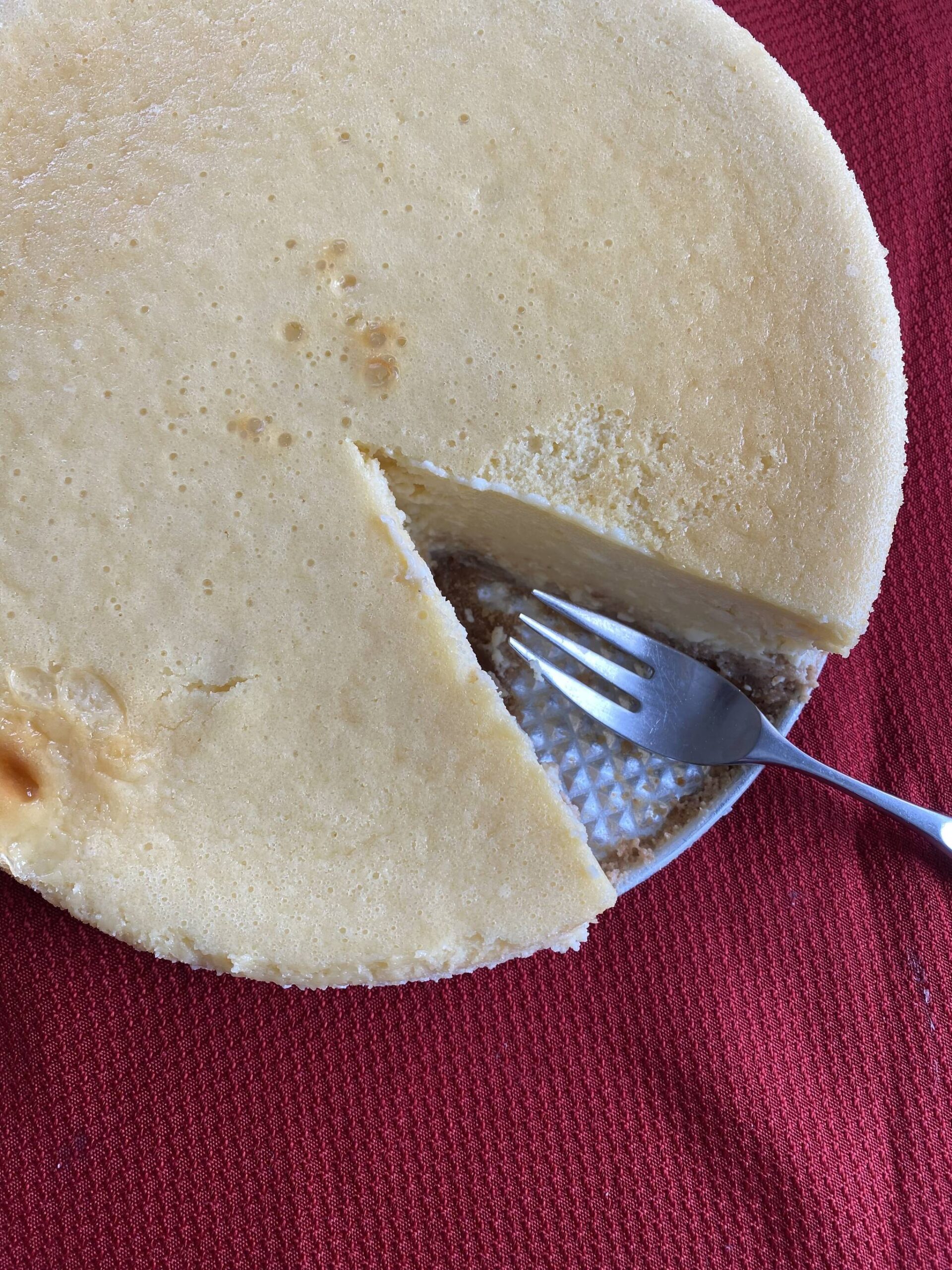Every cook has their culinary kryptonite, and mine is cheesecake. Well … any custard style pie or cake, honestly.
Cheesecakes, flans, pumpkin pie — I avoid making all of them.
It’s not that the flavor falls flat, or the crust turns gummy, or any issues with undercooking or overcooking. No, it’s the dreaded crack. No matter how I try to prevent it, I fail again and again. Even if the cake is intact when I set it in the refrigerator for the night, when I go to retrieve it, a giant crack through the center greets me like a slew of red marks on a school exam.
There’s no point in beating yourself up if you’re in the same boat because the truth is, sometimes it’s just not possible to prevent. Sometimes, even if you do everything right, your dish will fail, and that’s OK.
A cracked cheesecake is just an invitation to make a strawberry sauce or nutty caramel to drape over your mistake. We have a saying in pastry school that applies to this and so many other things in life: buttercream covers all.
I attempted a cheesecake again this week and was delighted to find a miraculously smooth cake waiting for me the next day. I don’t know what I did so differently this time to be successful, but I’ll share my recipe with you, and tell you exactly how I did it, and I’ll keep my fingers crossed that you might find luck like I did.
Ingredients:
For the crust
12 graham crackers
2 tablespoons sugar
5 tablespoons melted unsalted butter
Pinch of salt
For the filling
32 ounces (four blocks) of full fat cream cheese
2 cups sugar
1 tablespoon vanilla extract
3 tablespoons all-purpose flour
6 eggs
¼ teaspoon salt
½ cup sour cream
Directions:
Wrap the bottom of a 9-inch round springform pan with heavy-duty aluminum foil. You will want to wrap it multiple times in different directions. You’re doing this to prevent any of the water the cake will cook in from seeping in, so be thorough.
Lightly grease the inside of the pan with a flavor neutral cooking spray.
Crush your graham crackers into a fine crumb. A zip-top bag and a rolling pin work very well for this.
Stir in the sugar and salt, then drizzle on the melted butter.
Mix until it looks like wet sand.
Dump into the baking pan and use a flat-bottomed cup to press the crust down into a compact, even layer.
Bake in a 375-degree oven for 10 minutes, then remove and allow to cool completely.
Allow the cream cheese to come to room temperature.
In the bowl of your stand mixer combine the cream cheese and sugar. Beat on medium-low speed with the paddle attachment until smooth.
Add in the sour cream, vanilla extract, flour and salt, and beat at low speed until combined.
Add in your eggs, one at a time, allowing each egg to fully incorporate before continuing.
At this stage it’s important to not allow too much air to be beaten into the mixture. Keep the mixer on low and scrape the bottom and sides often to reduce mixing time.
Put on a pot of water to boil and prepare a large roasting pan (large enough for the whole springform pan to fit inside with room to spare all around).
Set the pan with prebaked crust into the roasting pan and pour your filling inside. Gently lift the whole roasting pan and tap it on the counter a few times. This will help to draw out any bubbles that might be trapped.
Set the oven to 325 degrees and let the cake sit while it preheats. This extra time will help remove more air from the filling.
When the oven is preheated and the water is boiling, set the roasting pan on the center rack and pour the boiling water into the pan to create a water bath for the cake. This will help regulate the cooking temperature and will help it cook more evenly.
Bake for 1 hour and 45 minutes. The cake should jiggle only very slightly in the center when done.
Remove from the oven and allow to rest in the water for 30 minutes before removing from the roasting pan.
Let the cake cool to room temperature before moving to the refrigerator for at least 8 hours before serving. Overnight is best.

